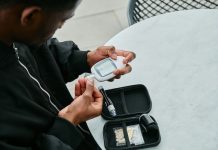
In a world where fast food joints are on every corner and processed snacks fill the aisles of every grocery store, it’s no surprise that junk food has become a staple in many diets.
However, this convenience comes at a cost, particularly when it comes to our health. One of the most concerning links is between junk food consumption and the development of diabetes, a chronic condition that affects how your body turns food into energy.
This review aims to demystify the relationship between junk food and diabetes, explore its effects on health, and offer practical tips for making healthier choices, even when dining out.
Junk food, characterized by high levels of sugar, fat, and salt, but low in valuable nutrients like fiber, vitamins, and minerals, has been directly linked to the increase in obesity rates worldwide.
Obesity is a major risk factor for type 2 diabetes, a condition where the body becomes resistant to insulin or doesn’t produce enough insulin, leading to elevated blood sugar levels.
The connection isn’t coincidental; research shows that regular consumption of junk food can lead to weight gain, inflammation, and insulin resistance, all of which pave the way for diabetes.
The effects of a diet high in junk food go beyond just weight gain. Such foods can cause rapid spikes in blood sugar levels, thanks to their high sugar and refined carbohydrate content.
These spikes are not only dangerous for individuals already living with diabetes but can also contribute to the development of the disease in those at risk.
Furthermore, junk food’s high caloric density means it’s easy to overeat, contributing to a cycle of unhealthy eating habits that can be hard to break.
Despite these risks, completely avoiding junk food, especially when eating out, can be a challenge.
However, with a bit of knowledge and planning, it’s possible to enjoy dining out without derailing your health goals. Here are some tips for navigating menus and making smarter food choices:
Opt for Grilled over Fried: When choosing between menu items, opt for foods that are grilled, baked, or steamed rather than fried. This simple choice can significantly reduce the amount of unhealthy fats and calories in your meal.
Watch Your Portions: Many restaurants serve portions that are much larger than recommended serving sizes. Consider sharing a meal with a friend or asking for a to-go box and saving half for later.
Choose Whole Grains: If the option is available, choose whole grains over refined ones. Whole grains have a lower impact on blood sugar levels and provide more nutrients and fiber.
Load Up on Veggies: Whenever possible, fill half your plate with non-starchy vegetables. They’re low in calories and carbs but high in fiber and nutrients, helping you feel full and satisfied without spiking your blood sugar.
Be Mindful of Sugary Drinks: Beverages like sodas, milkshakes, and sweetened iced teas can add a significant amount of sugar to your meal. Opt for water, unsweetened tea, or a diet soda instead.
Ask for Sauces and Dressings on the Side: This gives you control over how much you consume, helping you avoid unnecessary calories and sugars.
Understanding the link between junk food and diabetes is crucial for making informed dietary choices.
While it’s okay to enjoy junk food in moderation, being mindful of its effects and making healthier choices when possible can help manage and even prevent diabetes.
Remember, every small change in your diet can lead to significant improvements in your health and well-being.
If you care about diabetes, please read studies about a cure for type 2 diabetes, and these vegetables could protect against kidney damage in diabetes.
For more information about diabetes, please see recent studies about bone drug that could lower risk of type 2 diabetes, and results showing eating more eggs linked to higher risk of type 2 diabetes.
Copyright © 2024 Knowridge Science Report. All rights reserved.



